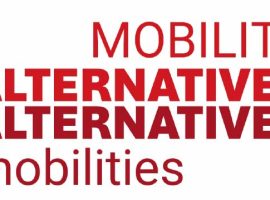The Origins of My Work on Ancient Roman Traffic and Infrastructure
By C.R. van Tilburg, Universiteit Leiden (The Netherlands)
Dr. Van Tilburg is the author of Traffic and Congestion in the Roman Empire (London/New York: Routledge, 2007, repr. 2012). He began participating with T2M since 2014 and has presented papers at the annual conferences in Philadelphia, Caserta (Italy), and Mexico City. For more information about his scholarship on mobility in Antiquity visit his faculty profile page.
As a schoolboy, I used to play with toy trains: Märklin and Dinky Toys. In those pristine times, my fascination for traffic was born. Later, my interest in Graeco-Roman Antiquity arose but my enthusiasm for traffic was still there. The theme of my graduation thesis at secondary school was dedicated to the Dutch underground systems of Amsterdam and Rotterdam. In those days, I often travelled by underground in Rotterdam and I was curious about the history, planning and construction of that system – older, more extensive and more fascinating than the underground in Amsterdam.
In 2003, there was a turning point in my life. I was driving eastbound in my car on the A12 highway, between The Hague and its suburb Zoetermeer. Traffic congestion took place and I was forced to drive slowly with many stops in between. The highway contained 2 x 3 lanes. Looking to the left, there was the light-rail line between The Hague and Zoetermeer (double track); to the right, the railway line between The Hague and Utrecht (also double track). There was also a bicycle path. But all this infrastructure was insufficient; there was still traffic congestion. Standing in the middle of this congestion, I was thinking – with nostalgia – about ancient traffic in the Roman Empire, 2,000 years ago: a quiet and silent society, no agglomerations, no highways, no motorway intersections and, most of all, no traffic congestion.
But later, I realized: was that really the truth? Was there, indeed, no congestion in the Roman Empire? Of course, the cities were smaller than nowadays – for example, in the region of The Hague, there were probably no more than 5,000 people; the Roman city of Forum Hadriani, the northern-most city of the Roman Empire on the continent, had 3,000 inhabitants. In contrast, nowadays the number of inhabitants of the agglomeration of The Hague amounts to just over one million inhabitants. But the local infrastructure was also smaller and narrower. Roman roads have usually a width of ca. 5 metres, coping all traffic.
So, from 2003 onwards, I started my research on Roman infrastructure, traffic flow and traffic congestion. I was amazed that almost nothing was published on this topic. There were many books and articles on the planning and construction of well-known and well-investigated Roman roads like the famous Via Appia, running from Rome to Brindisi in south-east of Italy. Other publications discussed bridges and aqueducts, or the very local traffic situations in Rome and Pompeii, but an integral study dedicated to roads and traffic in the Roman Empire as a whole was still lacking.
The conclusion of the research was surprising: there was, after all, traffic congestion in the rural and low-populated Roman Empire, especially in Italy. In this central region of the Empire, there was a concentration of cities and thoroughfares, and in the center of Italy there was Rome: the capital and largest city, counting probably more than a million inhabitants during the first centuries AD. In the context of legislation, I found texts on traffic regulation; archaeological sites like Pompeii and Xanten showed the evidence of one-way traffic, and in literature, poets like Juvenal and Martial complained about traffic noise and slanging-matches at midnight. Many similarities with traffic nowadays!
Over time my interest in other aspects of the amount of traffic in ancient times arose. Did people consider themselves as victims of traffic congestion? How did (local) governments react? Were there, then also, planners and engineers to tackle traffic problems? My conclusion was that in those different times the problem of traffic congestion was different: the ancient Roman society was strongly hierarchical and for practical purposes largely relied on slaves, and time was not measured by watches and clocks. Travelling, especially long-distance travelling, was restricted to relatively small groups: armies, officials and messengers. The common people did not travel far. Nevertheless, people like farmers, craftsmen and shopkeepers experienced problems from traffic congestion, especially inhabitants of larger cities like Rome: crowded streets and city gates would function as barriers. On city gates, I found hardly any relevant publications – the most important article I used was a German one, written in 1909! –, and they focused on art history like reliefs and inscriptions. Nearly no attention was paid to traffic issues.
During my research on city gates, paying attention to other urban infrastructures was inevitable: defence walls, sewers and aqueducts — connected with city gates as surrounding, leaving and entering cities. The gates and their infrastructures played a crucial role in the quality of life in the cities, providing safety, access, drinking water supply and sewerage. The last ones constituted the medical infrastructure of a city. Who conquered the gates, conquered the city. In the future, at upcoming conferences, I hope to present my research on city gates in the Middle Ages and Early Modern period, on Roman traffic in North-western Europe (in particular, the Netherlands), and on other aspects of ancient traffic in theory and practice.

